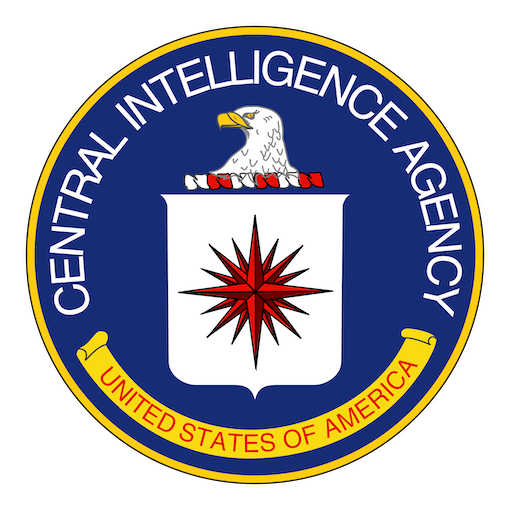CIA Star Gate Archives
 IRVA is proud to offer its members the entire content of the Central Intelligence Agency’s Star Gate Archives in an easy to access online format. The Archives as presented here are derived from the Remote Viewing Instructional Services, Inc. (RVIS) Guide to the Central Intelligence Agency’s Star Gate Collection Archives, authored by RVIS President, and founding IRVA director and past president, Paul H. Smith, Ph.D., Maj. US Army (ret.). The original Guide text has been adapted and edited for this special online edition by former IRVA President John P. Stahler with the generous permission of RVIS, Inc.
IRVA is proud to offer its members the entire content of the Central Intelligence Agency’s Star Gate Archives in an easy to access online format. The Archives as presented here are derived from the Remote Viewing Instructional Services, Inc. (RVIS) Guide to the Central Intelligence Agency’s Star Gate Collection Archives, authored by RVIS President, and founding IRVA director and past president, Paul H. Smith, Ph.D., Maj. US Army (ret.). The original Guide text has been adapted and edited for this special online edition by former IRVA President John P. Stahler with the generous permission of RVIS, Inc.
- Introduction
- Overview of the CIA Version of the Archives
- Historical Background
- Browse the Archive Contents
- Glossary
Introduction
Your examination of the Star Gate Archives will be a lot like a detective story. Much of the tale of what became known as Project Star Gate is here to be found, but it will take some digging and piecing together to ferret it out. But a little diligence will bring considerable reward. Among these documents are some pretty amazing things – mixed in with things more trivial and mundane. Separating the diamonds from the rough will now be much easier for you thanks to this guide, but it won’t be effortless. However, it will be worth the effort There is much that is informative, interesting, and even in some cases fascinating. You will find many actual remote viewing sessions here by people whose names you’ve heard – Joe McMoneagle, Mel Riley, Gabrielle Pettingell, Lyn Buchanan, and others (including many of my own). There are also interesting reports on operational projects, science papers (some quite long and exhaustive) detailing experiments and scientific discoveries, correspondence tracing the interactions of various intelligence agencies regarding remote viewing, and even reports of fact finding or skeptical investigations into various aspects of the governments programs exploring many aspects of parapsychology. You only have to find them!
Overview Of The CIA Version Of The Archives
- The Central Intelligence Agency provided the Archive on 14 CD-ROM disks. As shipped, the CIA provided no instructions or guide to the Star Gate Archives. On each of the disks, however, there is a small database file. We have extracted the most useful information among the several data-fields that are included such as original document numbers, creation dates, page count, and folder and document titles, and present the information as a scrollable list of documents. Sometimes the folder and document titles are informative, sometimes they’re not. But they do at least provide a starting point for access. This guide together with the document listings should help significantly in navigating through, sorting out, and drawing understanding from the Archives.
- Except for CIA Disk 10, each of the 14 disks themselves contain several sub-folders, each of which usually includes a large number of documents. (Disk 10 contains just one folder, containing only a few documents. Each sub-folder is labeled “Part0001,” “Part0002,” and so on. Inside each “Part . . .” folder are documents. Documents are listed by a file number such as: CIA-RDP96-00789400l60206000l-6 (each document’s number is also printed on the top and bottom of every page of the document itself). The first parts of the number remain the same in most of the sub-files (though they are different in a few). We present the lists of documents organized as originally presented by the CIA in a Disk . . . / Part . . . hierarchy.
- The original Archives included both a TIFF image file and as a text file for each document, paired next to each other. It appears that the original documents were first scanned, then processed by OCR (“optical character recognition”) software to provide the text file. We have converted the TIFF files to the more easily viewed PDF format. The text files are not included in this online version.
- The documents preserved in the Archive don’t seem necessarily to be included in any particular order, though often documents pertaining to a certain project or administrative function might be grouped together. For example, memos, letters, and spread sheets having to do with the program’s budgeting process for fiscal year 1984 might be grouped together on a given disk, then be followed by a set of remote viewing sessions pertaining to the Iran hostage situation but preceded by a collection of non-disclosure statements signed by people given access to information about the program. Often, lone documents that should be grouped with others elsewhere in the Archive show up in altogether different locations.
- A number of the documents are incomplete. This is due to any one of several reasons:
- Portions of some documents are ruled exempt from declassification, so pages at the beginning, middle, or end have been removed or are blank. Frequently text in the middle of documents will be redacted (blanked out), with no explanation (though there are usually annotations off to the side which, if the code were available, might tell the reason for the deletion).
- Draft copies of final documents are included in the archive, and these are sometimes incomplete.
- Sometimes pages are simply missing, with no explanation.
- Tabs and appendices are not always included with the base document, but in many cases do appear as separate entries in the archive – hopefully in close proximity to the base document (though not always).
